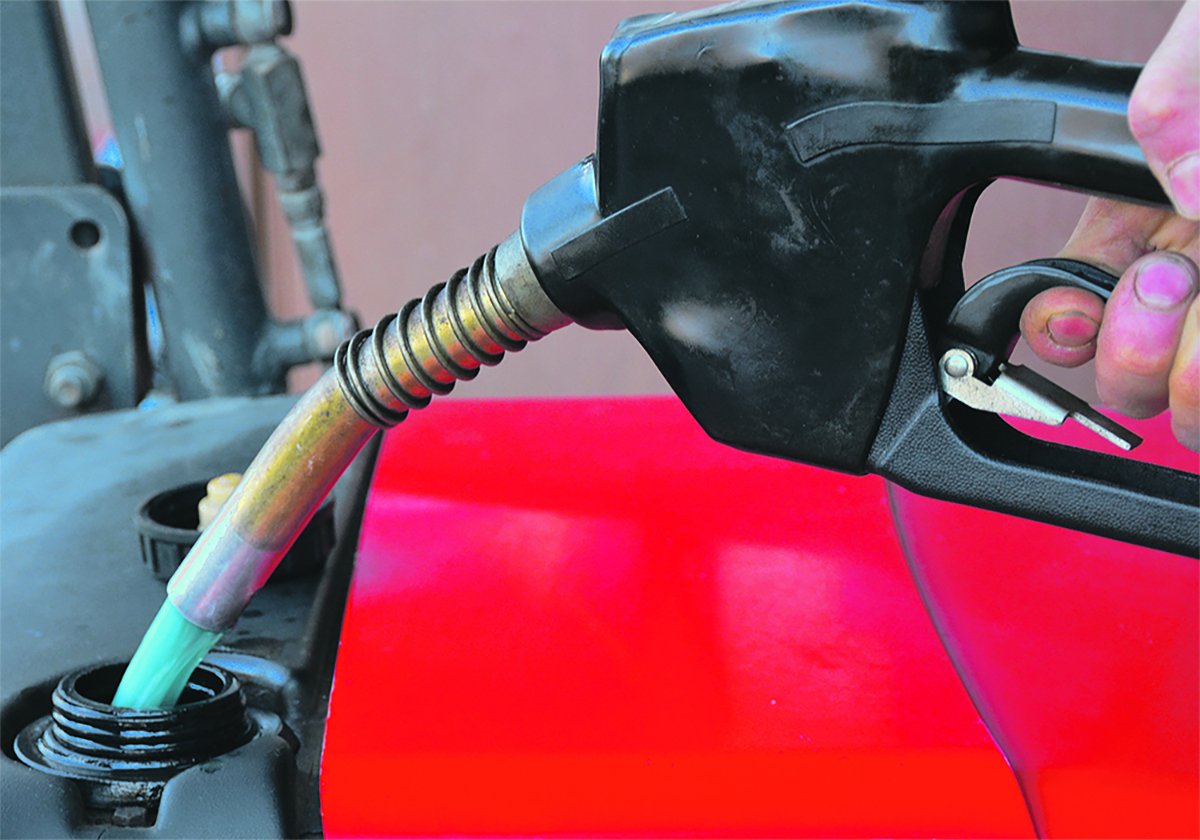TORONTO – A day of federal-provincial bargaining Jan. 31 appears to have convinced most provinces to accept a federal plan to launch a new five-year farm safety net regime April 1.
That will start a three-year transition in which almost all of Ottawa’s annual $1.1 billion risk management funding will flow through expanded production insurance and new Net Income Stabilization Account programs.
Nine provinces, excluding Quebec, signed an agreement that pledged to develop details over the next month so individual provincial agreements can be signed with Ottawa to take effect April 1. Saskatchewan minister Clay Serby, one of the three holdouts until now, said he will recommend that his province sign.
Read Also

Alberta may eliminate marked fuel
Alberta may soon stop selling dyed gasoline and diesel.
Later, Ontario’s Helen Johns insisted her signature is not a sure thing, and would depend on how her provincial farm groups react.
In fact, unless there is a sharp charge of heart within the farm community during the next month, the politicians will be hearing some stiff objections from the farmers they are supposed to be helping.
The farm lobby remains furious that programs are to be launched before their full effectiveness can be tested. Last week, Terry Hildebrandt of Agricultural Producers Association of Saskatchewan accused federal minister Lyle Vanclief of using “blackmail tactics” to force the province to sign untried programs by threatening to withhold funds.
After the ministers’ meeting, Canadian Federation of Agriculture president Bob Friesen insisted the ministers are wrong to start programs before farmers are comfortable that they are an improvement.
“We’re not trying to hijack the process,” he said in an interview. “But we need farmer buy-in and farmer comfort. We’re saying let’s cool our heels and make sure that we don’t make bad decisions. Let’s continue to work toward successful programs but definitely work with existing programs for another year.”
Vanclief made it clear Jan. 31 he would not consider extending existing programs and any province that does not sign on will not receive its share of $180 million meant for environmental, food safety, research and renewal programs.
He said the Toronto meeting turned the corner of acceptance after what appeared to be growing provincial unease as farmers became increasingly vocal in opposition.
“This was another one of those good days,” the federal minister told reporters. He promised the programs that will be pinned down during the next month will provide farmers more stable and predictable funding and, in some cases, more generous funding, although the overall level of spending will not increase.
As outlined to provincial ministers, the new programs include:
- A reformed NISA program that creates tiers of coverage, depending on the level of farmer investment. It will cover losses below an historic average production margin (revenues minus variable costs). The deeper the margin drop, the greater the portion of the cost picked up by governments.
- Any drop below 70 percent of the reference margin would be considered “disaster” funding, with governments picking up 85 percent of the cost of getting back to 70 percent.
- Beginning farmers would be able to receive support from the NISA fund with a down payment of one-third of the normal premium.
- A production insurance plan, allowing farmers to buy coverage for all their enterprise and not just crops, will be developed. Ministers are considering tying them together so that a farmer without production insurance is not eligible for full help from the disaster fund.
- A controversial proposal to allow farmers to withdraw funds from NISA for investment in on-farm food safety or environmental programs has been shelved until 2006. Critics warned that it could make NISA vulnerable to trade challenges.
- Federal-provincial cost sharing will continue to be a 60-40 basis and payouts will be on the basis of demand rather than on the basis of the size of the provincial industry.














